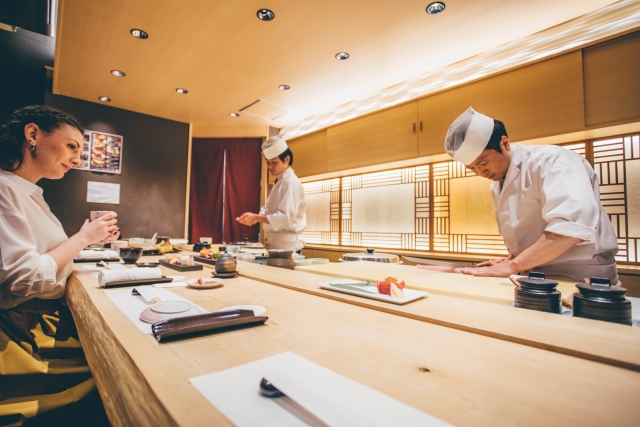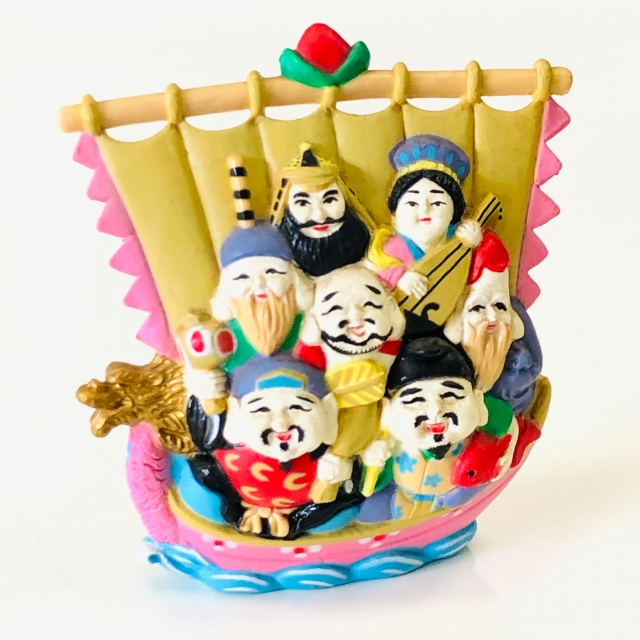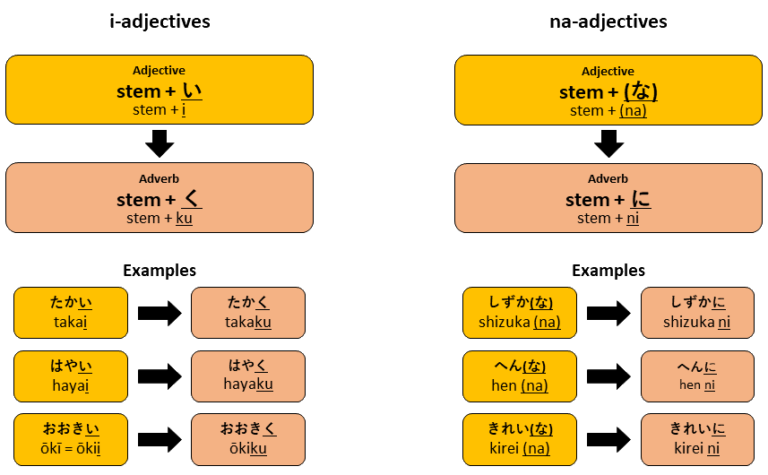If you visit Japan as a tourist, you must try “sushi.
There are many “sushi” restaurants around the world, but Japanese sushi restaurants offer the freshest seafood, and the level of craftsmanship in the way the ingredients are cut and prepared is quite high.
You can enjoy sushi at a typical “nagarezushi” (flowing sushi) restaurant at a reasonable price, but if you have come all the way to Japan, you should try “counter sushi.
The overwhelmingly delicious sushi items will melt in your mouth.
In this article, we will explain the types of sushi items popular in Japan.

Click here to learn Japanese language with the best one-on-one Japanese tutoring lessons in person or online.
Contents
Types of Sushi Items Popular in Japan
Let’s start with the types of popular sushi items commonly eaten in Japan. (In Japan, the neta is the name given to the ingredients that are placed on top of sushi.)
All of the neta have concentrated umami, so you will surely like them.
Salmon
Salmon” is a favorite sushi item for both children and adults.
The moment you put it in your mouth, its melt-in-your-mouth sweetness and flavor spreads, making you feel happy.
It looks pink and has a luster of fat that makes you want to eat a lot of it.
The smoothness when it hits your tongue is also great.
Furthermore, we recommend not only raw salmon, but also slightly cooked seared salmon and avocado, which is a combination of salmon and avocado.

Tuna
Tuna, a typical Japanese seafood ingredient since ancient times, is still very popular in 2022.
Tuna is basically fatty and very tasty, but it is also famous for its very different taste and texture depending on the part of the fish.
The most famous types of tuna are “Akami” (lean tuna with little fat and a crisp taste), “Chutoro” (medium fatty tuna with just the right amount of fat), and “O-toro” (fatty tuna with a delicious taste of high quality fat).
In addition, cheek meat, of which only two can be obtained from one fish, another rare part, the “matoro,” and chutoro, which is attached to the bone, are all completely different in taste and texture.
What they all have in common is that they are delicious no matter which part of the fish you eat.
It might be a good idea to compare which part of the fish you like best.
Shrimp
Shrimp is a standard item for sushi in Japan.
There are many varieties, such as sweet shrimp, button shrimp, tiger prawn, and lobster.
They are so concentrated in flavor that people who like this flavor order them one after another.
Shrimp avocado topped with avocado may be easy for foreigners to eat. (Some high-end restaurants may not carry this dish.)

Sea urchin
Sea urchin is considered one of Japan’s three greatest delicacies.
As mentioned earlier, it is an item that has the characteristic of dividing into those who like it and those who dislike it. For those who think it is “delicious,” it is a great dish.
For those who think it is “delicious,” it is a great treat, but for those who think it is “disgusting,” it is absolutely inedible.
The paste-like texture and rich flavor will make those who like it feel the happiest of all.
As it is a luxury food, its price is also high.
Squid
Squid is another standard ingredient in Japan.
Squid sold at a sushi bar is chewy and not so rich in flavor, but the squid served at a counter sushi bar is exceptional.
The best quality squid is often used, and the best chefs use the best cooking methods, so you can enjoy the strong umami and good texture of the squid.
Another characteristic of squid is that its texture can be completely changed just by changing the way it is cut.
To enjoy the difference, we ask, “Can you make it in a different way of cutting?
Ikura (salmon roe)
Ikura is the fish roe of salmon, and its greatest feature is its jewel-like beauty.
Each piece of ikura has a rich flavor, and when you bite into it, it cracks open to reveal its delicious taste.
It is especially delicious from September to December, when it is in season.
At reasonable sushi restaurants, such as kaitenzushi (conveyor belt sushi), “masuko” is used instead of salmon roe. (It tastes similar, but lacks richness and has smaller grains.)

Scallop
Made from the scallops’ scallops.
Because they are caught in large quantities, they are available at relatively reasonable prices.
They are very easy to eat and have thick flesh, making them one of the favorite foods of many people.
They have little fishy smell, so even foreigners should find them easy to eat.
Also, scallops are a material whose texture changes considerably depending on how the knife is used, so it may be a good idea to have them cut in different ways.
Delicious sushi ingredients differ depending on the season.
In addition to the sushi items introduced so far, there are a variety of other sushi items.
- Anago (eel)
- eel
- Shime saba (mackerel)
- Hamachi
- Yellowtail
- Yellowtail
- Fish & Octopus
- Flounder
- whelk
There are also nigirizushi such as these, gunkanmaki such as “kanimiso” and “tobikko,” and rolls such as tetsubi maki, natto maki, and kappa maki.
It is impossible to eat all kinds of sushi in one visit, so it is recommended to go back not only once, but many times.
Since the taste of the same fish changes with the seasons, you may want to ask when you go to the sushi counter, “What fish is in season now? (at a good sushi restaurant),” you might ask. (At a good sushi restaurant, they may be able to recommend the best seasonal ingredients).
Conclusion
In this article, I explained about “types of sushi items popular in Japan.
There are a great variety of sushi items, each with a different taste.
The items introduced in this article are popular items that Japanese people like to eat.
Please try them when you go to a sushi restaurant.
You will surely find something delicious that will make you want to eat it every time you come to Japan.
Related article:










